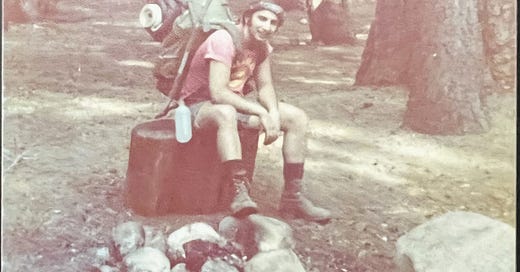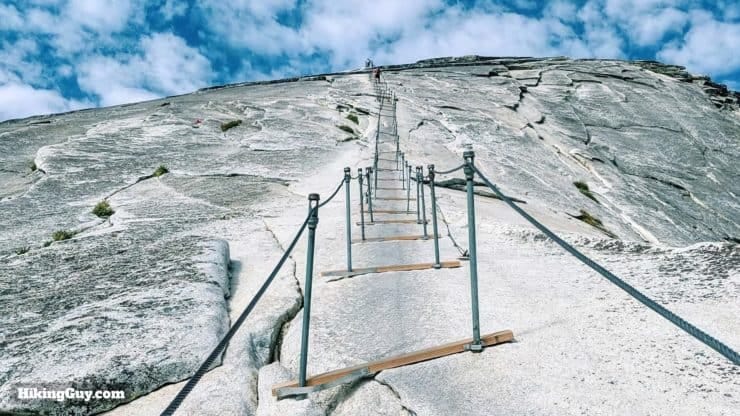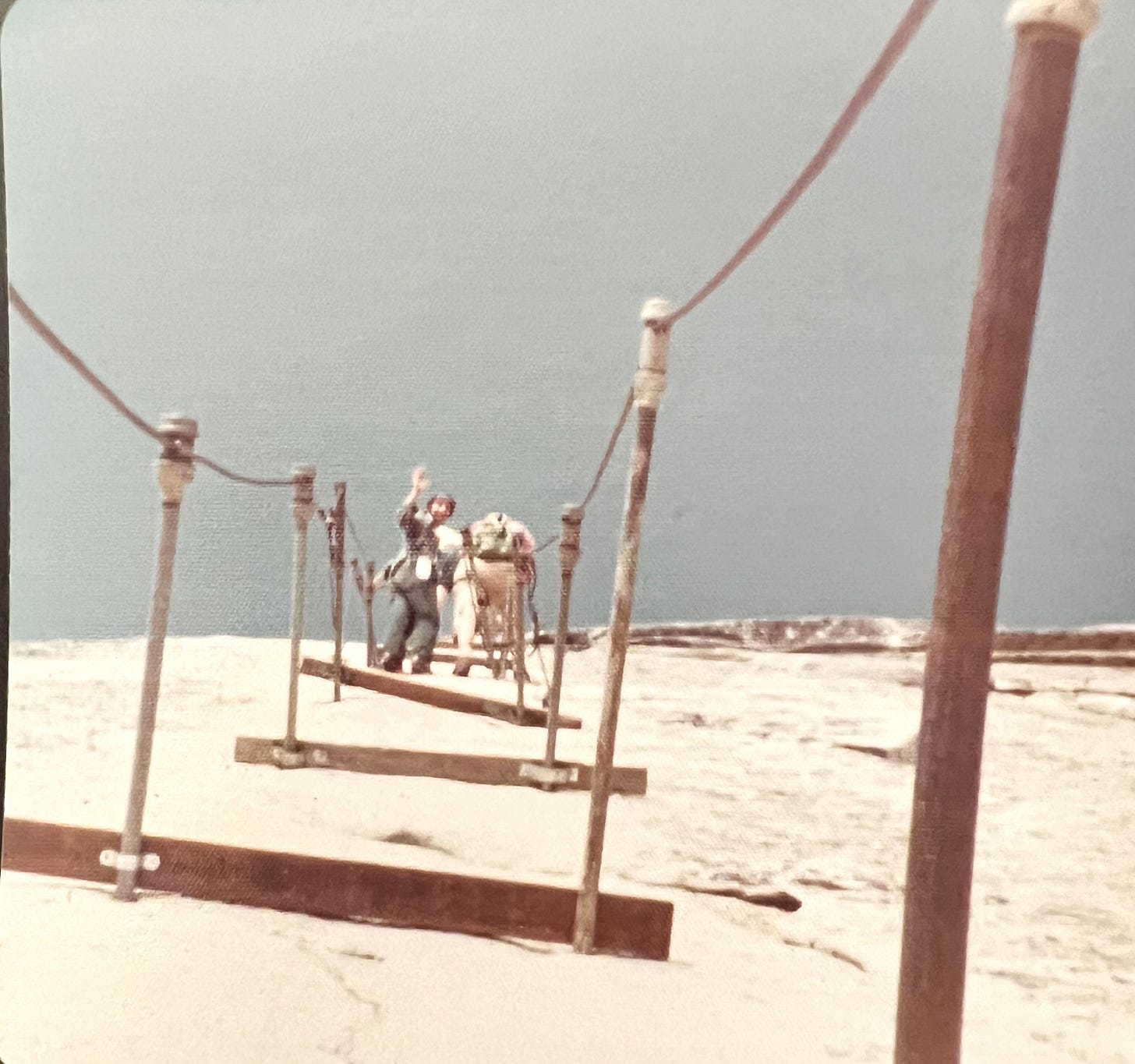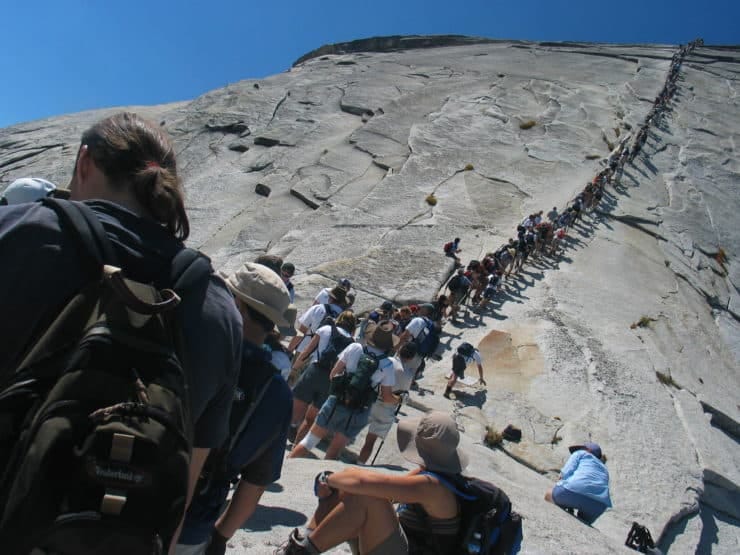It was one of the most physically challenging things I’ve done in my life.
During a long lost summer 50 years ago, my childhood friend Robbie and I decided we would climb up the back of Half Dome in Yosemite National Park. Just to be clear, we did not climb the face of Half Dome. That would have been a suicide mission.
But the back of Half Dome is challenging enough, especially for two Bronx boys whose previous climbing experience was some steep subway stairs.
Robbie and I had flown to San Francisco (my first plane ride ever) and taken a bus to Yosemite National Park on Memorial Day Weekend, 1974. Somehow, we had secured summer jobs in the park—by mail! I was assigned to work in the park deli, making sandwiches for tourists, one of whom was OJ Simpson. Robbie worked in a public shower facility where he handed out soap and towels.
I don’t know if anyone can appreciate how strange and wonderful this experience was for us. At the time, I was living in a Bronx housing project and Robbie lived in the condo high rises next to the projects. To go from the ugly inner city to the beauty of a national park practically blinded me.
I still vividly remember riding on the runner of a VW bug one night as we made our way through the park to get to the bottom of a waterfall where we dance and looked up at the moon bow. It’s one thing to say you feel like you’ve stepped through the looking glass, it’s another thing to do it. We were in a land where nothing was the same.
On our off days, we explored the park. That’s how we got the brilliant idea to climb Half Dome. The scenery was a constant in our lives. Half Dome, Yosemite Falls, El Capitan became familiar landmarks in our day to day lives. We knew we’d never climb the face of Half Dome but the back…well, we were game.
As you can see here, it’s a fairly steep climb. On the face, you’re on your own but on the back, park rangers helpfully placed wooden planks and cables up to the top so it’s a matter of gripping the cables and moving from one plank to the next. The wooden planks give you a chance to rest and catch your breath.
The granite trail can be slippery and people have died on this hike, although not very often. Nine hikers have died here in the past 100 years. Still, there are falls and people freeze and have panic attacks all the time.
This part of the hike takes about half an hour. It’s easy enough but getting to the bottom of Half Dome—where these cables begin—is a fairly long hike in itself. It’s a 17 mile round trip hike from the Valley floor to the top and, if you’re in decent shape, it takes about 9 to 12 hours.
Robbie and I decided we would stop, camp out overnight and do the hike in two days. Being the newbies that we were, we loaded up on cans of food (instead of taking much lighter freeze dried fare) and set out. You can see how heavy my backpack looked in the photo above.
Overnight, we decided to pitch a tent in Little Yosemite Valley which we came to learn was nicknamed Little Bear Valley. We knew enough to put our food in a bag and hang it from a tree limb. Almost as soon as dusk set and we were in our sleeping bags in our tent, we could hear the bears walking around outside. Peeking out, I could see we were surrounded by six or more big black bears.
We lay as quietly as possible and congratulated ourselves on being smart enough to keep all the food outside the tent. In the morning, we awoke, hungry and thirsty to find the bears had torn off the branch where we hung our food and pretty much had eaten all of it. The cans were ripped open and licked clean. It’s pretty simple when you have claws.
I should mention that there were no protein bars back then and no ubiquitous water bottles of Poland Spring water. We each had a plastic water bottle and that was that. We were able to refill and drink the water from the mountain streams which is what we did the rest of the hike.
The food was gone (although Robbie remembers the bears leaving us some) but we were too close to call off the hike so we soldiered on to the base of the cable trail that leads up the back of Half Dome. There were signs that are there to this day about not hiking if there are any black clouds on the horizon or if it looks like rain.
We took a look up, didn’t see anything and began the ascent. We did not have gloves (as most everyone does these days), we had very little or no food and as much water as fit in our plastic bottle.
But we were in great shape. Back then, we played sports every day and had the advantage of youth. We sailed up that ascent with very little trouble. And it was empty. No lines, just a few other hikers. Compare that to this photo taken during “rush hour” from 11 a.m. to 2 p.m. on a recent summer day. It’s not so empty anymore.
Chances are you’ll have to wait 20 or 30 minutes to even begin your climb (this article does a good job describing the process) and you’ll need to enter a lottery to secure a permit to climb. All of that was unheard of in 1974. We just hiked up and kept going. No rangers checking anything.
Today, there are a million warnings online about what shape you should be in to make the climb, as well as warnings about panic attacks, and how to pass other climbers and on and on it goes. I’m not sure I would have gone if I’d read all that but then again, I was 21 years old. Anxiety was still in my future.
And sometimes, the stupidity of youth saves the day. Because when we got to top, we took one more chance—we lay on our stomachs and peeked over the edge to see the climbers coming up on the face.
Then we headed back down before it got dark. I don’t remember being hungry, just more exhausted than I’d ever been in my life.









Oh the good old days when we took chances every day but are still thriving! Life was uncomplicated and freeing.
Wonderful article, Paul. That spirit of adventure and curiosity has served you well in life and in producing 48 Hours episodes.